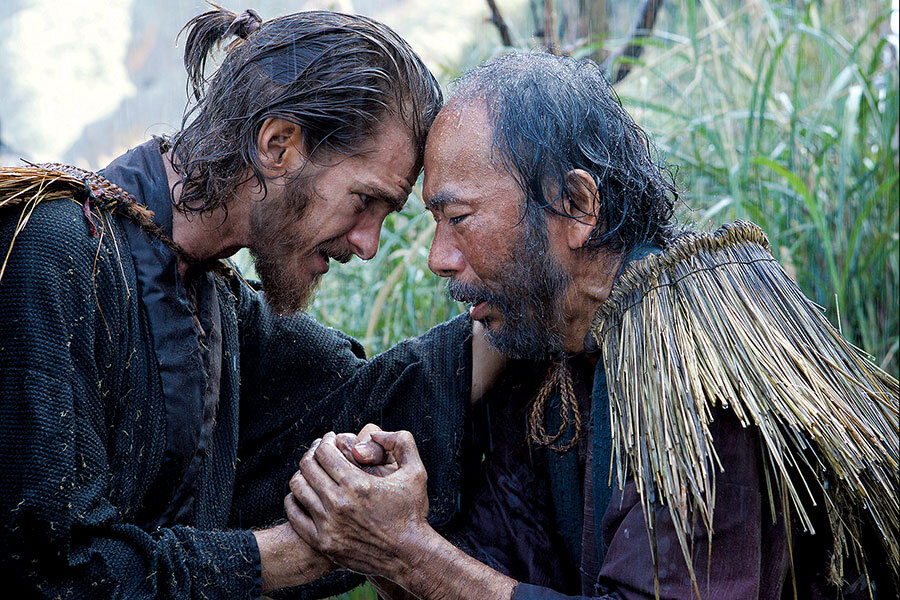‘Silence’ falls short in portraying true religious feeling
Loading...
Martin Scorsese’s movies have often been about the turmoil of surviving, or fleeing from, a life of religious faith. I am thinking not only of films in which that struggle is made explicit, as in “The Last Temptation of Christ” or “Kundun,” but also in such movies as “Mean Streets,” with its commingling of gangsterism and Roman Catholic ritual, and “Taxi Driver,” which is about the hellish wages of sin. Scorsese has often remarked that, before he became enraptured by filmmaking, he seriously considered becoming a priest.
His new film, the alternately powerful and somnolent “Silence,” is one he has fervently wanted to make for decades. It’s based on Shûsaku Endô’s acclaimed 1966 novel, set mostly in 17th-century Japan, during a time when Christians were attempting to proselytize the faith throughout Europe and Asia. Portuguese Jesuit priests Sebastião Rodrigues (Andrew Garfield) and Francisco Garrpe (Adam Driver) refuse to believe the rumor that their revered mentor, Father Ferreira (Liam Neeson) – whom we first see in the movie looking on in horror as fellow Christians in Japan are tortured – has renounced his belief and is living “as a Japanese.”
Their decision to seek out Ferreira in Japan, accompanied by a local guide, Kichijiro (Yôsuke Kubozuka), is perilous in the extreme. Sheltered in a remote, mist-wreathed village by a cult of hidden Christians, all live in constant fear of being found out by the authorities and the man known as the Inquisitor, Inoue (Issei Ogata), whose goal of purging Japan of Christianity is accompanied by the most agonizing tortures.
Scorsese focuses on the spiritual intensity of the two priests without clearly delineating the differing striations in their personalities. Scorsese is showing us these men in a way that is both up close and Olympian – we seem to be observing their travails from a godly remove – but the film’s heightened, ritualistic presentation is unvaryingly earnest. He wants the film itself to function as a kind of religious experience. The repetitions in the narrative, the renunciations of faith that are imposed upon the villagers and the priests once they are captured, and the ways in which they accept or refuse apostasy, are all given a hushed, incantatory quality.
In this sense, “Silence,” though conceived on a grand scale, is an almost obsessively personal, at times even private, film. Scorsese, with his co-screenwriter, Jay Cocks, is working out his conflicted feelings about faith and redemption, with, at best, one eye, not two, on the audience. From his standpoint, any criticism of the film for being too slow and repetitious and forbidding would be irrelevant.
And yet the assumption that a film of deep religious feeling has to resemble a long slog is contradicted by the movies, some of which Scorsese references (such as Robert Bresson’s “Diary of a Country Priest”), that came fully alive onscreen at their moments of greatest spiritual intensity . In “Silence,” because the priests, especially Rodrigues, on whom most of the narrative is focused, are so laggard, our attention shifts to the film’s more conventionally engaging characters – specifically the rambunctious Kichijiro, a Judas stand-in, and the Inquisitor, who, as played by Ogata, is a wily adversary who steals every scene he’s in. His dialogues with Rodrigues are like philosophical chess games. He tells the young man that Christianity “is of no use in Japan” and regards Rodrigues’s impending apostasy as a prize catch.
Scorsese has tamped down the performances of Garfield and Driver in the service of his unvarying ritualism – to the detriment of the movie, I think. He has also dispensed with the stylistic flourishes, the swooping camera moves and rapid-fire editing, that characterize much of his work. American filmmakers especially often reach for the overbearingly stately when they approach religious material – the most egregious example is Terrence Malick’s “Tree of Life” and “Voyage of Time.” Or else, like Mel Gibson, as demonstrated yet again in “Hacksaw Ridge,” they conflate religiosity with bloodletting.
The question of how to portray true religious feeling in a medium designed for popular entertainment is a vital one, and Scorsese, despite the power of his commitment here, hasn’t really answered it. But there are pinpoint moments that make the movie worth seeing anyway, when it suddenly effloresces with spirituality. When Rodrigues speaks to God and says, “I pray, but I am lost. Am I just praying to silence?,” the film’s title earns its gravity. Grade: B (Rated R for some disturbing violent content)







